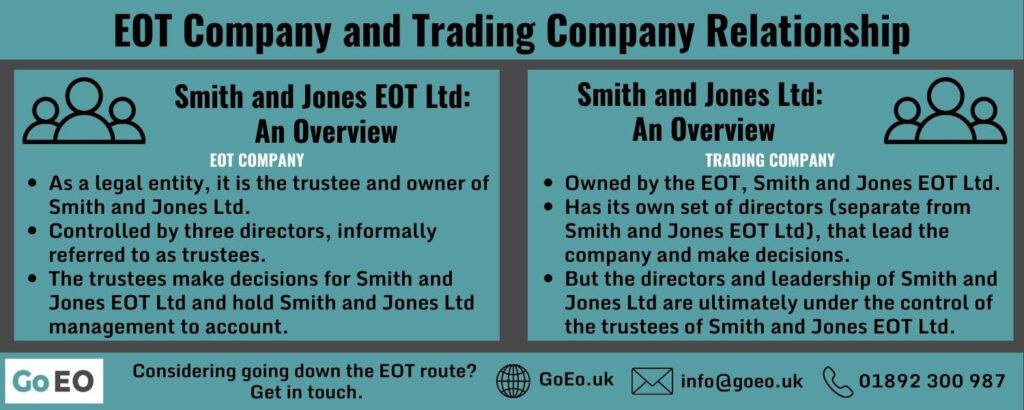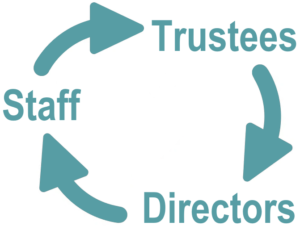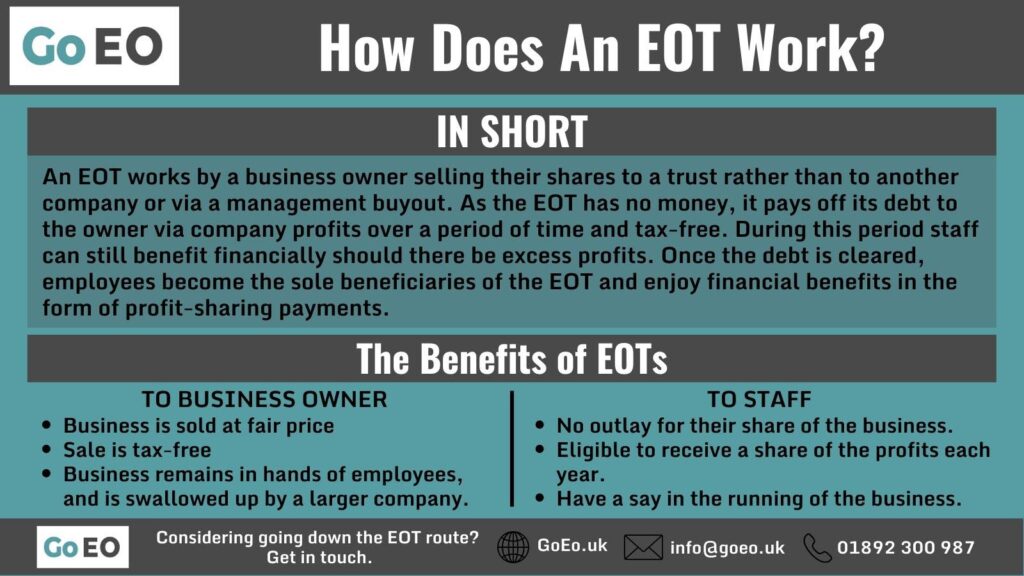Employee-owned businesses have a history that dates back almost a century in the UK, but it is only in recent years that the concept has begun to become particularly popular.
This has been thanks in the main to legislation introduced by the UK Government in 2014 to try and encourage more companies to become employee-owned.
And that legislation has certainly had the desired effect.
Figures show that in June 2022 there were 1,030 employee-owned businesses in the UK, up from 576 in 2021 and just 17 in 2014.
So how exactly does an Employee Ownership Trust Work?
Let’s take a closer look...
How Does An EOT Work?
The History of Employee Ownership Trusts

The most well-known employee-owned company in the UK is the John Lewis Partnership, which was founded way back in 1929.
It employs well over 80,000 members of staff and generates revenue in excess of £10billion a year.
In terms of employee-owned businesses, it is far and away the biggest in the UK, but since Employee Ownership Trusts (EOTs) were introduced in the Finance Act of 2014, more and more companies have been following suit and handing control over to their employees.
That first year 17 companies went down the EOT route, a year later, in 2015, there were 53 EOTs in the UK and by 2016 there were 102.
The figure has continued to increase year on year, hitting 335 in 2019, 474 in 2020 and 576 in 2021.
The jump from 2021 to 2022 was significant though, by June 2022 there were 1,030 EOTs in the UK, with EOTs accounting for 1 in 20 of all private company sales.
More and more business owners are recognising the value of EOTs, but…
How Does An Employee Ownership Trust Work? Short Answer
The name, Employee Ownership Trust, hints at how the concept of an EOT works.
An EOT is essentially a vehicle that allows a business owner to sell their business to its employees, without putting it on the open market and at a fair price that is determined by an independent valuation.
In addition, there is zero capital gains tax payable on the sale proceeds.
The employees do not directly own shares in the company, but they are the beneficiaries of the EOT.
So employees don’t have to spend any of their own money buying shares of the company, but can still financially benefit from a share of the business via the EOT.
How Do Employee Ownership Trusts Work? Longer Answer

An EOT is usually represented by a limited company acting as its trustee.
The business owner sells his shares to the EOT, and the directors of the new EOT trustee company legally control the trading company. We’ll typically refer to these individuals as “the trustees”.
The day-to-day running of the trading company will remain with the directors of the trading company
Legally the trustees of the EOT cannot personally benefit from the assets they hold. The beneficiaries, as stated above, are the employees.
But remember the EOT has just been set up, so it will most likely not have any cash, which means the benefits to the employees may not be immediate.
Over time the EOT will use its profits to first pay off its debt to the owner of the business.
Once the founder’s debt is clear, then employees will enjoy the financial benefits of all business profits going forwards
An extra bonus is that each staff member can receive a profit share of up to £3,600 each tax year, free from income tax.
So Who Controls the EOT?
We’ve mentioned that the EOT is usually a limited company and that it is controlled day-to-day by directors.
But who are these directors and how does this work? Let’s take a closer look.
So legally an EOT has one trustee, the limited company that owns it.
If for instance, your company is Smith and Jones Ltd, then the trustee company set up to represent it might be called Smith and Jones EOT Ltd.
Smith and Jones EOT Ltd is controlled by its directors. For most small companies, there will be three directors and they make the decisions.
To confuse matters somewhat, these directors are often referred to informally as “the trustees”, as they oversee Smith and Jones Ltd, so that is what we will refer to them as from now on.
The trustees of Smith and Jones EOT Ltd do not run Smith and Jones Ltd. It is left to the directors of Smith and Jones Ltd to make important strategic decisions.
However, the trustees do hold the directors and management of Smith and Jones Ltd to account for the decisions they make.

How Far Does the Employee Ownership Extend?
So if the trustees hold the leadership of Smith and Jones Ltd to account, then how much power do the employees of Smith and Jones Ltd actually have?
Well quite a lot actually as long term the employees choose the trustees that represent them.
And what that essentially means is there is a shift of power in EOTs when compared to traditional companies, as shown by the circle of control below:

- Employees: Have the power to elect a trustee to the EOT.
- Trustees: Have the power to appoint or remove directors if seen as necessary.
- Directors: Have the power to hire and fire employees.
So the vital difference here is that whilst in a traditional company the employees have no power, in an EOT they have, and, as a collective, they have as much power as anyone else.
EOTs also tend to involve employees in decisions more than other businesses.
Not only that, staff members know that they have a further vested interest in the business.
They are entitled to a share of the profits each year when agreed by directors and approved by trustees. So there is an extra incentive to work effectively, as they know any boost in income will directly benefit them.
For more details read our guide to the structure of employee-owned companies.
Types of Employee Ownership
We’ve specifically focussed on how an EOT works here, but there are other types of employee ownership.
Let’s round up by quickly covering these.
Direct Employee Ownership
The direct employee ownership model sees staff buying shares in a company with their own money.
The advantage of this is that staff have something tangible and of value that they can sell later.
The disadvantage of course is that, unlike an EOT, staff have to spend their own money to buy shares, which might not always be easy to sell.
Indirect Employee Ownership
This is the model we have discussed in this article when an EOT holds the shares on behalf of an employee.
It is this model that Go EO specialises in.
Hybrid Ownership
A hybrid ownership model is simply a mix of direct and indirect employee ownership.
So, for example, an EOT could own 60% of the shares, with the other 40% owned by individual employees.
In this model an EOT will usually hold the majority of the shares, as this brings with it associated tax perks.
Summary

An EOT works by a business owner selling their business to a trust. The debt created by this sale is paid off over time by company profits.
Employees are the beneficiaries of the EOT, so once the debt to the owner is paid off they enjoy the financial benefits in the form of profit-sharing payments.
The benefits to the business owner are:
- They sell their business at a ‘fair price’ as decided by an independent assessment.
- The sale is tax-free.
- The business remains in the hands of the employees, rather than being swallowed up by a larger company.
The benefits to the staff are:
- They don’t have to pay anything for their share of the business.
- They will be eligible to receive a share of the profits each year.
- They have a say in the running of the business.
The trust is controlled by trustees, and these trustees hold the directors and management of the trading company to account for their decisions.
Likewise employees choose the trustees that represent them.
This means there is a balanced share of power, with no one having ultimate control.
